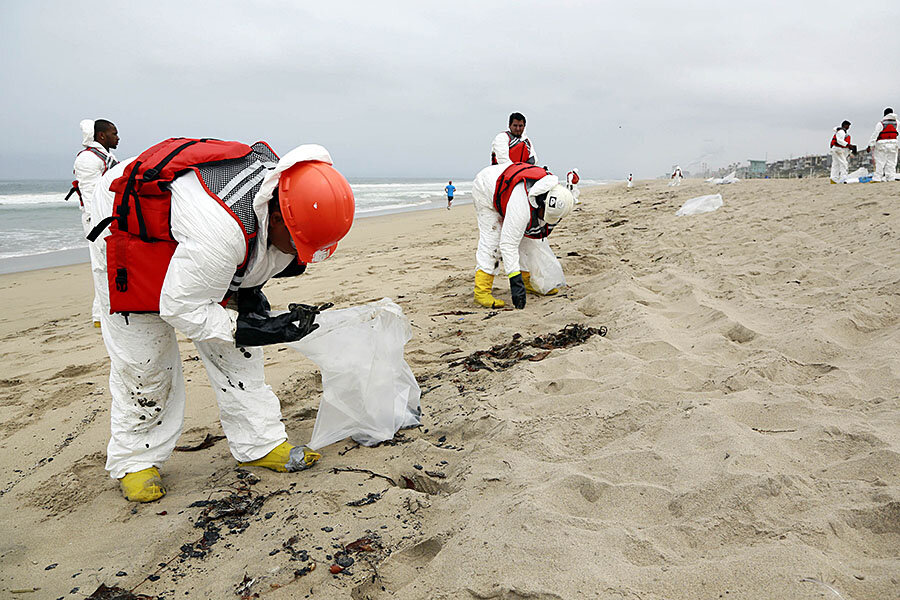Mysterious oily goo on California beaches puzzles officials
Loading...
| Manhattan Beach, Calif.
Seven miles of shutdown Southern California beaches, their surf made sticky by an oily goo of mysterious origin, could soon reopen if cleanup continues at the current clip.
Crews scouring 7 miles of Southern California beaches had scooped up truckloads of mysterious oily goo Thursday and the area might be clean enough to reopen Friday, authorities said.
Workers scooped up truckloads — about 30 cubic yards — of tar balls and patties that began washing ashore Wednesday but had mostly dissipated by Thursday.
"There appears to be no new tar balls or anything additional to the amount that we have recovered thus far," U.S. Coast Guard Capt. Charlene Downey said.
The stretch of coast from Manhattan Beach to Redondo Beach that was closed to swimmers, surfers and beachgoers could reopen early Friday morning if the sand and sea are given an all-clear, Downey said.
The environmentalist group Heal The Bay expressed worry that the beaches would be reopened too soon.
"It's nearly impossible to walk along the beach in that area without encountering a small oil glob," the group said in a statement after its vice president and staff scientist Sarah Sikich walked the beaches early Thursday evening. "From a human health perspective, exposure through skin contact is a concern."
Someone dropped off an oil-covered loon at a wildlife center in Manhattan Beach, but it's not clear exactly where the bird or the oil came from, the Coast Guard said. No other wildlife problems have been reported.
U.S. Coast Guard and state officials said samples of tar and water would be analyzed to identify where the material originated, but it could take days to get the results.
There is a refinery and offshore oil tanker terminal nearby but the Coast Guard did not find a sheen from a possible spill after the tar started to accumulate.
Nothing has been ruled out, including last week's coastal oil spill that created a 10-square-mile slick about 100 miles to the northwest off the Santa Barbara County coast.
Lifeguards chased a handful of surfers out of the water Thursday but beach life was otherwise normal for people exercising, playing volleyball, skating and riding bikes along the shore.
"I got a couple waves in and then they came by again and told me to get out," said Scott Berk, who regularly surfs at Manhattan Beach.
He said surfers are used to seeing bits of tar in the water and on the shore from natural seafloor seepage but the amount that came in Wednesday was concerning.
"I hope they clean it up quickly," he said.
Public health officials told people to avoid contact with the water, wet sand or any material that washed up in the area.







